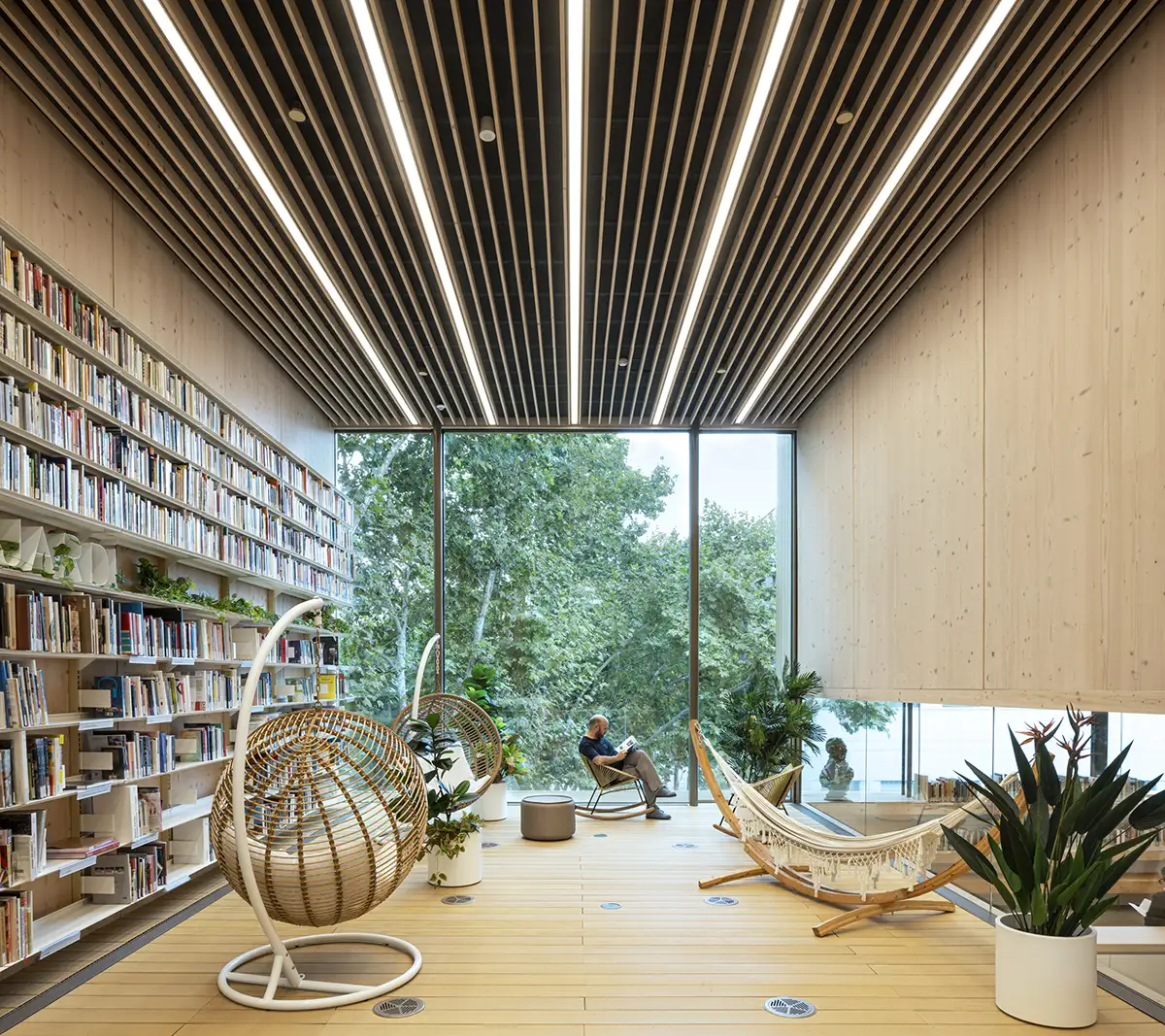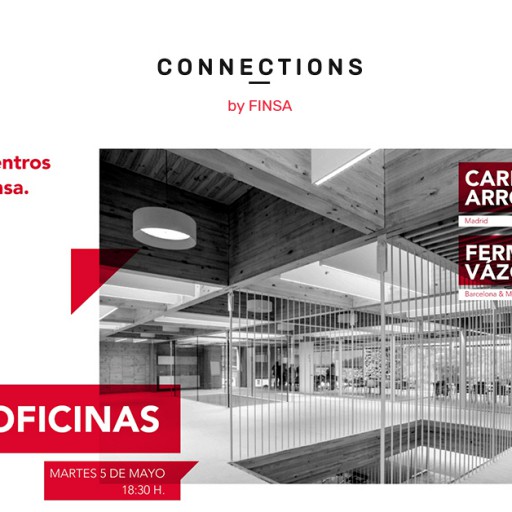“The library is the most democratic institution that exists because nobody—absolutely nobody—can tell you what to read, when, and how”, said Doris Lessing, the 2007 Nobel Prize in Literature winner. In a way, it is almost a miracle that these spaces exist: temples of knowledge where anyone can enter, spend a lot of time, and leave with books (or music or movies) in their backpack. One might imagine that, in the digital 21st century, they are in decline, but nothing could be further from the truth. For example, there are more public libraries in the United States than Starbucks and McDonald’s combined.
The buildings that house libraries are often featured in specialized architecture and design magazines. After all, they are very attractive projects for professionals in the field due to their size (although they do not always have to be large) and the possibilities they offer. It is no wonder that many of them are one of the main tourist attractions in the cities where they are located. Some are notable for their age and beauty, such as the Joanina Library at the University of Coimbra, which has stood since the 18th century and is famous for the bats that protect its books.
Ver esta publicación en Instagram
Others attract tourists for the innovation of their buildings and architectural value. A recent case: the Gabriel García Márquez Library in Barcelona, which was named the best public library in the world in 2023, after evaluating the interaction of the facility with its surroundings and local culture, the architectural quality of the building, the flexibility of spaces and services, sustainability, commitment to learning and social connection, digitalization of services, and compliance with the United Nations sustainable development goals.

Basic elements in library architecture
Are there basic architectural elements that all library buildings have in common? Actually, no. “There are libraries without books, small libraries, large libraries, without counters, with counters, with a lot of technology, with absolute silence, with a lot of activity… There are many solutions, a lot of diversity”, explains Ignasi Bonet Peitx, an architect and specialist in library architecture. The most important thing when approaching a library project is to have “a clear definition of needs from the beginning so that the design can adequately respond to them”.

Often, the client assumes that an architect knows how to design libraries. And while this is true, it is a very general knowledge. “The real needs of each library (space for collections, silent and concentration rooms, meeting rooms with audiovisual equipment, workshops…) are known by each team, each institution, and this must be clearly communicated to the project team”, he elaborates. From this information, “specific surfaces, a space diagram, and relationships between them, and a budget…” will be derived.
Traditionally, the presence of a collection was something all these projects had in common, so there was always a need for the space to accommodate it. The solutions depended in part on the type of library and whether the books were preferred to be within reach of visitors or not. As an article in Public Library Quarterly recalls, in the case of public libraries, the preference changed over time. Throughout the 20th century, to free up space, a large part of the collection began to be stored in a depot, leaving a large room for reading and working but disconnecting readers from the books. More recently, an attempt has been made to recover this connection through strategies that bring the shelves closer to the reading and working rooms.

Library design and its collection
On the other hand, as a result of digitalization, “the collection continues to be an important element, but perhaps not the central element”, says Bonet Peitx. Its weight -and the architectural decisions that must be made for its accommodation- also varies depending on the type of library. University libraries have very large collections (hundreds of thousands of documents), while public libraries have smaller collections (usually tens of thousands of documents in our country).
Another differential characteristic of the public library compared to other types is that there are usually no important heritage collections. That is, the mission of the public library is to promote reading, and the collection is an instrument. On the other hand, in other types of libraries, such as specialized or national ones, the mission is to preserve the collection, ensuring its conservation for future generations. And this requirement “is a strong constraint for building design, for aspects such as security in storage, for example”, explains the expert.
Architecture for libraries in the digital age
One of the basic functions of libraries is to provide access to knowledge, something that has been revolutionized by the advent of the internet. “Having physical documents is no longer the most relevant thing; rather, the most important things are two different issues: the technology to access online content (computers, internet connection…) and the knowledge to use that technology and access intangible and ubiquitous information”, says Bonet Peitx. This represents a change that implies redefining what a library is: the focus shifts from being a container for the collection to providing people with the tools to process information and access knowledge.
Ver esta publicación en Instagram
This means that, when designing new library buildings, “it becomes relevant to design spaces for users to do things related to information processing“. Reading remains the most important activity, the architect clarifies, but other activities also need to be accommodated: rooms for group work (for school projects, but also to organize a trip, for example), for telematic or hybrid meetings, for literary gatherings, for book presentations and meetings with writers and publishers, for collective commented auditions, for workshops (on literary creation, or any activity that may be related to books), spaces for small performing arts presentations, radio studios for recording programs produced collectively (as a school activity, for example), training classrooms (for language classes, computer and internet courses for older people…), etc.
Moreover, the change also implies a technification of buildings “so that there can be an interaction between the physical and virtual library”. Everything that happens in the library can be streamed, and the conversation that occurs online can be read “on screens in the physical spaces of the library”, adds Bonet Peitx.
Ver esta publicación en Instagram
At the moment, this only happens in some pioneering buildings. “Now the challenge is to transform libraries built more than ten years ago (which are the vast majority) based on these principles. And, in addition, we must incorporate European environmental legislation into the entire constructed park, which requires zero-emission facilities in a few years”, he indicates.
How to design libraries in reused buildings
Finally, new libraries are not always in brand-new buildings built from scratch; quite often, a building previously used for another purpose is renovated and adapted. In these cases, in addition to considering everything mentioned so far, it is also necessary to propose a project that truly takes advantage of the previous construction, maintaining its architectural identity and giving new life to a space that had become vacant and unused. There are already libraries in former churches and palaces, in factories that had closed, in the halls and rooms of what was once a hospital. These projects gain a lot in sustainability -something essential for any current building -and by maintaining the cultural heritage of the place, they acquire a high symbolic value that is usually very well received by the community.
Ver esta publicación en Instagram




